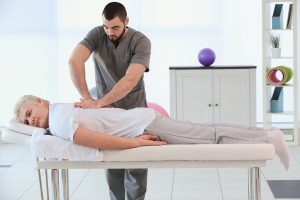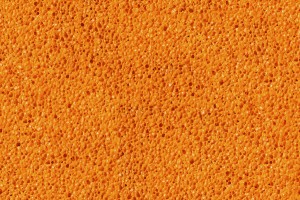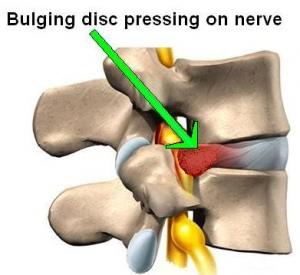A person with chronic back pain has several treatment options, but only stem cells cure back pain. Stem cell treatment has been available in the US and Canada and many other countries for approximately 10 years.
I come from a family with a strong history of back pain (mother, maternal grandmother and maternal grandfather). They all got their back pain in their mid to late 40’s. From my growing up years I remember that they complained about chronic back pain on and off. Sometimes they had to cancel events they wanted to attend because they could not tolerate sitting. In those times there were no CAT scans or MRI scans. If you had back pain, you just had to put up with it.
My personal experience
Given my family history of back pain I was surprised that my back pain was only a more persistent problem in the last 1.5 years, but not earlier. Normally a monthly chiropractic adjustment would keep my back symptoms under control. But in the last 1.5 years I needed to see a chiropractor more often than that. I took omega-3 fatty acid supplements for the past several years (two capsules twice per day) thinking that this should halt the development of degenerative arthritis in the lower back joints. When I turned 71, it was clear to me that I was now at the point where my immediate relatives were when they were in their late 40’s. Therefore, diet, exercise, weight loss, good nutrition and supplements can only do that much for you. If there is a familiar disposition, it will eventually catch up with you.
Conventional medicine’s approach to lower back pain
I have practiced as a general practitioner for 16 years in the past. In addition I joined Workers’ Compensation for another 16 years as a medical advisor. From this clinical activity I knew of hundreds of cases first hand what the steps were in the treatment of chronic back pain. First of all, physiotherapy treatments or chiropractic treatments were the treatment protocol. In minor back pain cases this would often help the pain symptoms. Furthermore, if residual pain persisted, the patients received anti-inflammatory medication (non-steroidal anti-inflammatory drugs or NSAID’s). Finally, if symptoms continued to persist, a CT scan or MRI scan was necessary for assessment. If it showed moderate changes like my findings, the patient received intermittent physical therapy, chiropractic therapy or acupuncture therapy.
Surgical procedures for chronic lower back pain
If there were more severe degenerative changes or spinal stenosis with severe degenerative changes, a referral to an orthopedic surgeon or neurosurgeon would be necessary. But this was often the point of no return. If the surgeon felt that the condition was severe enough to do back surgery, various procedures could follow. For disc herniations irritating one of the nerve roots, laparoscopic discectomy was the treatment of choice. For severe spinal stenosis or intractable pain from end stage facet joint disease instrumentation was an option.
Fusion surgery
Under a general anesthetic the surgeon makes an incision in the patient’s back over the lumbar spine. The surgeon identifies the diseased disc level and places stabilizing stainless steel plates over the affected facet joints or the narrowed disc space. Many people think that fusion surgery would be the end of their trouble. In many cases this can actually be the beginning of chronic back trouble. The problem is that the body is designed to move. If the surgeon takes movement away in one area of the spine, the levels above and below have to work harder. It often takes only a few months or a couple of years, and the patient is back with excruciating pain from degenerative changes in the levels above and below the previous surgery. What does the surgeon usually do? He does more fusion surgery above and/or below the previous area of surgery.
Alternatives to back surgeries
New treatment options have opened up new possibilities. On the one hand there is prolotherapy treatment that I have described under this link. On the other hand stem cell therapy is another popular regenerative technique. Prolotherapy strengthens tissues, relieves pain and increases the range of motion in joints. There is 80 to 85% full pain relief and more than 80% improvement in range of motion. Prolotherapy promotes the healing of torn ligaments and tendons. There are many suitable conditions that lend themselves to the treatment with prolotherapy like the hip, knee, shoulder, ankle, neck, lower back and elbow. With prolotherapy the physician uses hyperosmolar dextrose injections into the affected area. Current thinking is that this irritates the tissues, which mobilizes local stem cells to heal the area.
In my case I had two prolotherapy treatments of my lower back, but it did not change my lower back pain.
MRI scans of my lumbar spine
We needed to find out what was happening in my lower back. My general practitioner ordered MRI scans of my lower back in summer of 2017. There are 5 levels of the lumbar spine from L1 to S1. In my case one level of 5 was normal. The other levels showed bulging of the discs. The scans also showed signs of arthritis in the small joints adjacent to the spine. Lucky for me, there was no sign of spinal stenosis. It was not good news: overall 4 levels of my lumbar spine showed signs of degenerative disc changes. At the same levels I also had arthritic changes in the facet joints. This was enough to consider some intervention, or I would be headed for trouble in the future.
Stem cell treatment for chronic back pain
Following the failed prolotherapy for my lower back pain I needed to figure out what to do next. The MRI scans had shown degenerative changes in the discs of the lower 4 levels of the lumbar spine. There also was arthritis in eight facet joints (two on each side of each of the four L2 to S1 levels). Conventional medicine would have offered corticosteroid injections into the facet joint areas. My experience with many patients who had this procedure was that the effect of the corticosteroid injections wore off after 3 to 6 months. If a patient had more than 3 injections, there usually was a point of no return, and fusion surgery would be next.
Best therapy for my own chronic lower back condition
For me there was no question that stem cell therapy would be the best fit for treating my back condition. In addition platelet -rich plasma and low-level laser therapy could activate the stem cells. This would be the ideal non-invasive treatment option to treat my chronic lower back pain. I had met Dr. H. Michael Weber before. He is a well-known laser expert from Germany who has a double certification as an engineer and as an internist treating various clinical conditions with laser and stem cell therapy. In addition he is an expert of regenerative medicine methods. Also, he invented and designed the laser machines himself. I set up an appointment in the fall of 2017 at his clinic in Lauenförde, Germany.
First day of stem cell treatment
On the first day fat tissue was removed under a local anesthetic from my lower left buttock area. Next a cell separator divides the tissue into connective tissue, fat cells and mesenchymal stem cells. Two blood samples were also taken from me for processing platelet rich plasma (PRP). PRP is a natural stem cell activator. Growth factors and anti-inflammatory cytokines were also part of the mix together with the stem cells.
The very same afternoon I received the stem cell mix by injection. Eight needles, four on each side, were necessary to administer the stem cell combination. I also had a treatment on a light therapy bed with red light to activate stem cells in general. The stem cell injection was a pain free procedure, as I received a shot of a local anesthetic in the area before. After that the physician inserted laser applicators through the interstitial needles.
Laser activation of injected stem cells
The next step was to use laser treatments with 5 different colors (infrared, blue, red, yellow and green) for 10 minutes for each of the 8 interstitial needles. The laser activation and the PRP mixed with the mesenchymal stem cells were the two main stem cell activators. They are crucial for activating the stem cells. But growth factors and anti-inflammatory cytokines also aided stem cell activation.
Second day of stem cell treatment
On the second day I received an infrared light treatment over my back for 20 minutes. Following that I received light therapy bed treatment for 20 minutes. The physician told me that all of this was to activate the stem cells further. The next step was a bone marrow low-dose laser therapy.
Bone marrow stem cell activation by low-dose laser therapy
Often stem cell therapists mix mesenchymal stem cells from fat tissue with bone marrow stem cells which they harvest before from pelvic bone marrow. Dr. Weber told me that he would do a direct bone marrow laser activation of the pelvic bone marrow instead. He anesthetized the tissue above the pelvic bone. Following this he made a small hole into the pelvic bone through which he inserted a laser applicator into the bone marrow cavity. 5 different colored lasers were again applied for 10 minutes each to activate the bone marrow stem cells. Studies have shown, as Dr. Weber stated, that low-dose laser activates bone marrow stem cells. They can be found in the blood circulation within 1 hour. This is similar to mixing stem cells in a Petri dish and then injecting it as a mix, except it is a less invasive approach.
Further activation of stem cells
Following these procedures Dr. Weber felt that another light bed therapy was necessary for 20 minutes. He also gave me a Weber medical laser watch called “Regenerate+”. This device fits on the wrist. It is programmed to generate a number of different lasers to shine against the underside of the wrist. This is the area where the ulnar and radial arteries run close to the surface. This device will shine the laser lights for 30 minutes, and the laser light reaches the arterial blood. The circulating stem cells from the stem cell therapy are receiving a further boost this way. Dr. Weber told me to use this device twice a day on an ongoing basis. The Weber medical laser watch stimulates the immune system. Jet lag also responds to, and it can stimulate stem cells as they circulate in the blood.
Conclusion
Medical tourism is flourishing. I have become a medical tourist myself because I did not want to get crippled by conventional medicine regarding my lower back pain. Two days after my stem cell treatment my back pain was significantly improved. There was mild pain in the area of the fat liposuction site. Four days after the treatment the lumbar spine pain was gone. Innumerable chiropractic treatments and two prolotherapy treatments had not given me relief. Now stem cell therapy in Germany has taken my chronic back pain away in only a few days. I realize that the healing process will take 3 to 6 months to complete, but as a patient what counts most is pain relief.
What, if someone criticizes me for choosing stem cell treatment?
It is difficult to argue with success. Whether somebody criticizes me for having followed a non-conventional treatment protocol does not matter to me. My question back would be: what do you do when conventional methods fail? Are you willing to suffer chronic pain and swallow pain pills that could either get you addicted or have serious side effects? I would try stem cell therapy again, if I had a problem that does not respond to conventional therapy.








